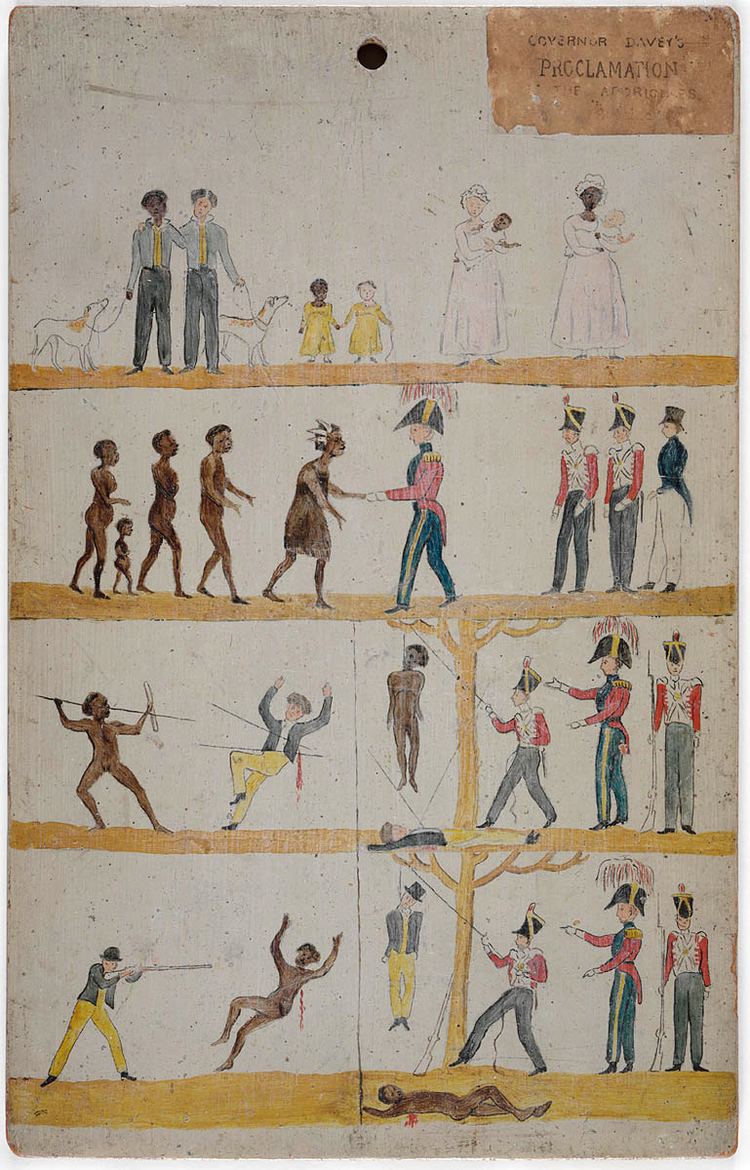 | ||
Governor Davey's Proclamation is a misnomer for an illustrated proclamation issued in Tasmania by the British government after the 1st November 1828. Although attributed to Governor Davey it was first authorised by Lieutenant Governor George Arthur. Several illustrated narrative versions of the proclamation were created over time. Many of these four-strip pictograms were originally painted onto Huon pine boards using oil paints. Of approximately 100 proclamation boards produced there are seven known to survive in public collections.
Contents
The proclamation was intended to explain martial law during the period referred to as the Black War.
Design
The pictogram scenes that depict Aborigines, British military and settlers were based on drawings by surveyor and artist George Frankland, who suggested in a letter to Governor Arthur that they be tied to trees in remote areas of the island. The proclamation boards were designed to communicate to the Indigenous peoples of Van Diemen's Land that all people, black and white, would be treated equally under the British colonists law. Historian Penelope Edmonds notes "The boards were made after the 1829 declaration of martial law against Tasmania's Aboriginal people, and the hangings from trees actually depict moments of summary justice and retribution on a violent frontier."
The proclamation boards were reproduced by convict artists. The drawing was mass-produced by pricking the outline of a drawing with a pin, in a technique known as pouncing or spolvero. Charcoal was then dusted through the pinholes and pounded to make an outline.
Distribution
The editor reported in the Hobart newspaper on 5 March 1830 that "We are informed that the Government have given directions for the painting of a large number of pictures to be placed in the bush for the contemplation of the Aboriginal inhabitants."
Derivative images
A ceramic cup made by Tasmanian potter Violet Mace in 1934 is sometimes described as the 'proclamation cup' as it is hand-painted with a series of images that are derivative of those found on the proclamation boards. The cup is held in the collection of the National Museum of Australia.
